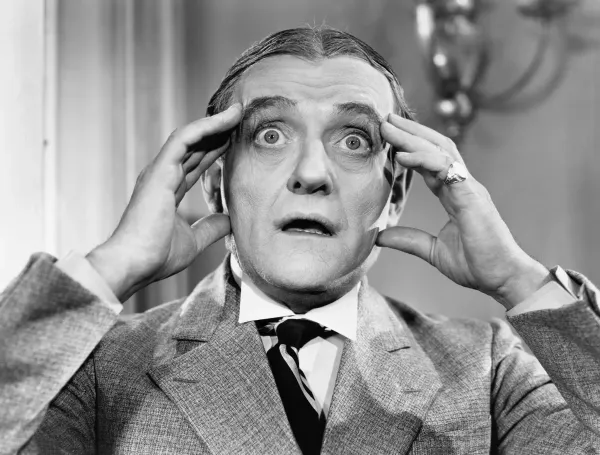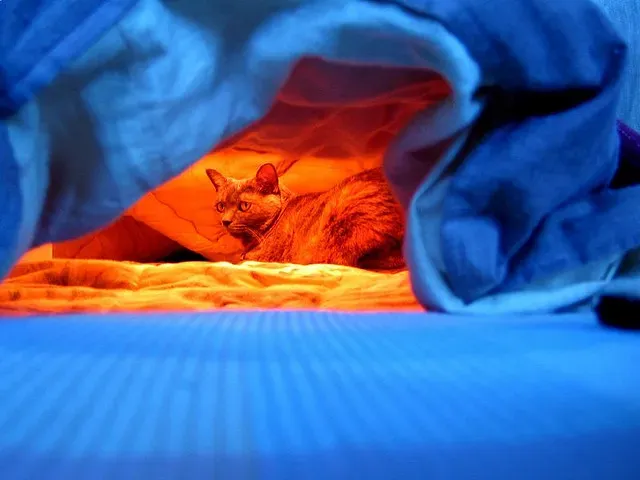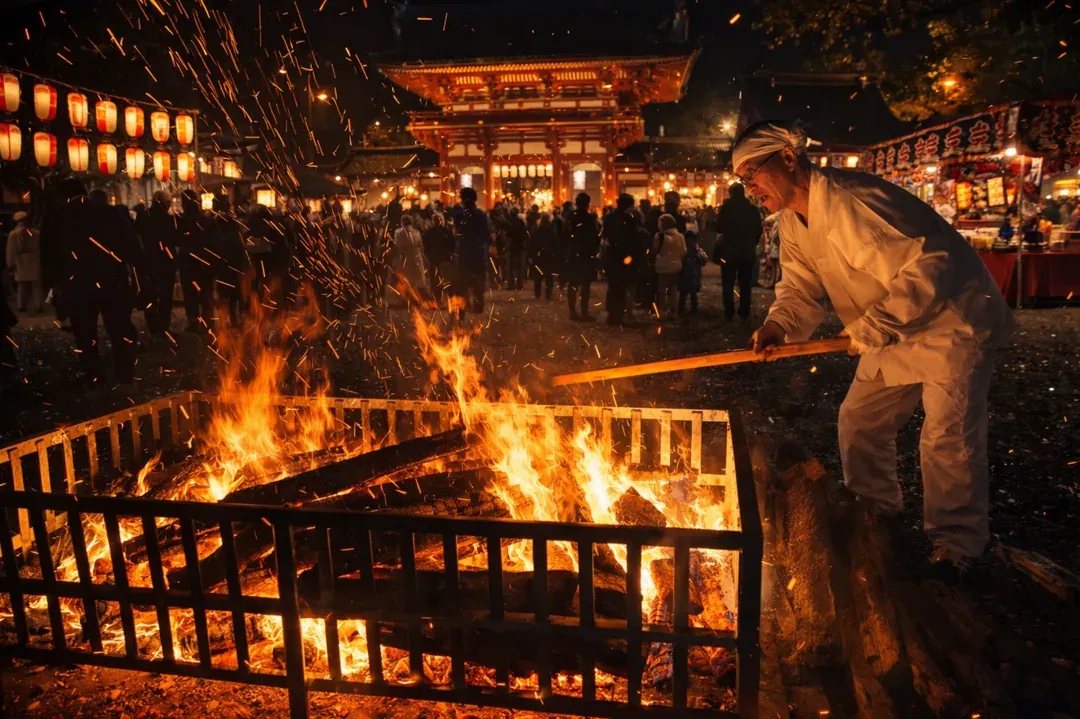The weather's funny in Japan, isn't it? Though as a Brit, I find myself constitutionally obligated to mention that it's nothing compared to the time it drizzled for seventeen straight weeks in Manchester. One morning here, you head out in shorts and a t-shirt, wiping the sweat from your brow, and then BLAM! That evening, it's so cold you could carve elaborate stained-glass landscapes with your nipples. Much like British weather, really, except here, you can actually see the sun occasionally, which is frankly unsettling.
Well, the season is upon us, and it's starting to get a bit chilly. Well, just a bit. Because let's face it, it's not really that cold, is it? However, I should mention that by British standards, "not really that cold" encompasses everything from a mild autumn breeze to an actual arctic blizzard, so perhaps I'm not the most reliable observer.
Okay, some of you are from traditionally warmer climes, and it may be a bit of a shock to the system. But for those of you from the wilds of northern America, the south of the Antipodes, or even the northeast of England (where wearing anything other than a t-shirt at any time of the year will open you up to accusations of being a shandy-drinking poof)—it's not actually that cold, is it? Though I must say, the way my Japanese colleagues react to the first hint of autumn, you'd think we were experiencing the sort of weather that sent woolly mammoths into early retirement.
But, for some reason, it is. And do you know what that reason is? Yes, that's right. Earthquakes! As we all know, here in Japan, the barometer's needle swings with greater alacrity than a horse suspended above Catherine The Great. However, the inhabitants of this sensible and practical nation see insulation as being a real ball-ache to clean up after an earth tremor rather than something that would keep those aching balls from sweating profusely in the summer or shriveling up like pickled ume in the Winter. Paper-thin walls? Check. Loft insulation? Nope. Double glazing? Fuck right off. It's rather like living in a cardboard box but with better appliances and more convenient vending machines.
And so, this leaves the average gaijin with a simple choice: heating bills that would put the GNP of a small South American country to shame or to spend their winters as chilly as a husky's chuff. But we here at Nagoya Buzz have taken pity on you. We shall come to your aid, much like the British weather forecast comes to aid those planning a summer barbecue—with questionable reliability but unwavering confidence. We bring you the top nine ways to keep warm in Japan!
The Kotatsu
It's a table that keeps you warm. Simple as that. Well, not really. Actually, it's a table that has not only a heater attached to it but also a blanket on top. So, you know those warnings that you get on the side of electric heaters that tell you not to cover them? Or public service advertisements advising you not to dry clothes too near electrical heat sources? Nonsense, apparently. Much like British health and safety regulations, they're more what you'd call guidelines than actual rules.
The main problem with this, Japan's favorite winter appliance, is that they are so cozy it's difficult not to fall asleep under them. Should this happen, the best-case scenario is third-degree burns. Worst case scenario? Lamenting for the rest of your painful, agonizing (though admittedly short) life, the loss of your no-claims bonus on your household fire insurance. Still, at least you'll be warm, which is more than can be said for anyone who's ever relied on British central heating.
Go to the loo
As confusing as it seems, the Japanese think that the best way of minimizing your likelihood of catching a cold in Winter is, strangely enough, to open the windows. Whilst, on one level, this makes sense – fresh air and all that—on another level, it's completely and utterly bonkers, rather like serving tea without biscuits or queuing without complaining about the weather.
Many of your offices will be not just as cold as a witch's teat but as cold as the tip of the teat that has unfortunately slipped from a poorly pinned witch's gown during a witchy snowball fight. There is one area of respite, however, and that is the heated toilet seat, where one can happily while away the hours with a roasty, toasty rump. One might suggest that spending one's workday perched upon a heated throne isn't the most dignified of solutions, but dignity, like proper insulation, is something one learns to do without in Japan. Don't spend too long, though, as a bunch of arse grapes, warm or otherwise, are no laughing matter.
Kairo
And no, we don't mean a misspelt North African capital. A kairo is essentially a miniature, portable warmer, much like carrying around a tiny sun in your pocket, only with less chance of causing a catastrophic nuclear reaction. These may come in various forms, electrical and microwavable, but the disposable ones, activated by the breaking of gel capsules within, are most prevalent.
In fact, these wonderful little things can be kept anywhere. In the pockets to keep hands warm; in the shoes to keep feet warm; and for women, there are even sanitary pad-shaped ones to keep your, ahem, lady parts warm. Be warned, sitting for too long with crossed legs can result in singed bits, so you can insert your own joke here about smoked kippers. Though I must say, in true British fashion, that it's still preferable to waiting for a bus in Preston in February.
The Subway
The hottest day on record in Japan was August 17, 2020, when the mercury bubbled at a whopping 41.1°C in Hamamatsu—at least, that's what the meteorologists say. But what do they know, eh? During the Winter, Japan's over-filled and over-heated subway cars quite regularly top this, reaching sweltering levels that make summer in Death Valley seem nothing more than a trifle sticky.
One might suggest that cramming oneself into a metal tube heated to temperatures typically reserved for crematoriums is perhaps not the most dignified solution to winter chills, but dignity, like proper insulation, is something one learns to do without. So, if you wake in the morning feeling a tad on the chilly side, hot-foot it to your local station, cuddle up to the nearest sleeping salaryman, and ride around until spring. Still better than the Northern Line in rush hour, mind you.
Kerosene Heaters
Every season in Japan has its own particular scent. Spring has the wafts of cherry blossom, summer has barbecues in the park, and autumn has the sickly rotting seamen-like odour of gently decaying ginko leaves.
But Winter? It has kerosene.
Nearly every Japanese home will have a small kerosene heater somewhere, and its smell is ubiquitous in these colder months. It's rather like having a small, domesticated dragon in your living room, only with less chance of it eating your cat. Cheap and effective, they are reassuring in that, unlike kotatsu or iori, the only real danger faced is carbon monoxide poisoning, which, as far as a heater-related death goes, is rather like slipping into a warm bath. Unless the gas explodes. Then you're fucked. But at least you won't have to hear another Brit mention how this weather is "nothing compared to the winter of '63."
Hot Sake
Many countries have a particular food and drink to keep you warm in Winter. The British have steaming hot-pots and casseroles, though mainly we just complain about the cold until we forget we're chilly. The Swedish drink a warmed, spiced wine called glögg, and the Americans have Krispy Kreme burgers topped with baconaise, a meal that wraps you in a layer of fat so thick that you could survive the coming ice age in little more than a muumuu.
Japan, being a practical country, is no exception, and in WWinterr, many a family will gather around a steaming nabe bowl. However, the Japanese tend to be somewhat introverted and require social lubrication, which is where hot sake comes in. It heats the body and warms the soul. As long as you ignore the scientific evidence linking alcohol and exposure to hypothermia, you'll be snug as a bug in a rug. Much like how we Brits ignore the evidence that complaining about the weather doesn't actually change it.
Iori
Do you live life on the edge? Do you laugh in the face of the kotatsu's danger? Do you tweak the nose of certain death and stand there cackling maniacally as it quakes in its little boots? If so, this is your kind of heat source. The iori is the traditional Japanese central heating system, quite simply, a sunken hearth in the middle of the room. That's right; it's nothing more than a hole in the ground and a roaring fire in your living room.
It was not the best of ideas, obviously, as more than 100,000 people found out when the fires swept through Tokyo during the great Edo earthquake of 1923.
Haramaki
Now, we know what you're thinking: "How is Edo-period armor going to keep me warm, and how do you expect me to get hold of one without breaking into a display case at the Tokugawa Museum, disguising myself as one of those mannequins with the armor on, hiding until nightfall before sneaking out and climbing down the walls like a ninja?"
"That seems a little elaborate and unnecessary to me," you say.
Oh, you weren't thinking that? Our mistake. While less effective against arrows than its samurai predecessor, today's haramaki proves remarkably successful at defending against that most fearsome of enemies: a slight draft. The Japanese, you see, believe that heat escapes not from your head but from your belly, and this girdle-esque get-up will be worn by elementary schoolers, OAPs, and anyone in between.
And the best thing about them is that they can be bought in any department store, negating any necessity of breaking into national heritage centers. Though if you're British, you might want to consider the full samurai armor option—it's probably more effective against rain than your emergency umbrella from Boots.

"After subscribing to the weekly Nagoya Buzz newsletter, I was suddenly able to see the future!"
"Every train delay announcement in 2026 will be delivered by interpretive dance!"
- Bob from Imaike
Originally Published as: "Keeping Warm-Mark Guthrie Likes it Hot" in the December 2012 issue of NAGMAG

Nagoya Buzz
Events, local info, and humor for the international community of Nagoya, Japan.
Follow Nagoya Buzz :










Leave a Comment